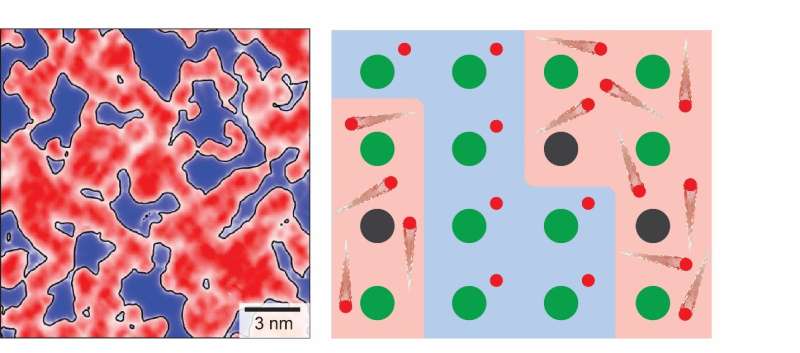Melting of frozen electrons visualized

For the first time, physicists have visualized the 'melting' of electrons inside a special class of insulators that allows electrons to move freely; the process turns the insulator into a metal and possibly later into a superconductor. The results have been published in Nature Physics.
Some materials carry an electrical current more easily than others. Metals are, for example, world-class conductors. Inside metals, electrons form an electronic liquid that flows through the atomic lattice. In specific insulators, on the other hand, electrons are stuck to their place in the lattice; the electronic liquid is frozen. In these so-called Mott insulators, you can replace some atoms with different ones. Physicists call this 'doping'. It is known that doping leads to a melting of the frozen electronic liquid, but nobody knows how this process works.
Now, Leiden physicist Milan Allan, together with lead authors Irene Battisti and Koen Bastiaans, have visualized this melting process for the first time in a family of materials called iridates. They discovered that the melting process is very inhomogeneous, with puddles forming in between frozen areas. These puddles are only a few nanometers in size.
Apart from getting insight into a fundamental process, the discovery also shines light on the mystery of superconductivity—a phenomenon in which electrons move without resistance. Superconductivity is important because it allows transportation of electricity with zero energy loss. "We came to believe that this kind of melting is a universal prerequisite of superconductivity," says Allan. "If we could manage to melt the electronic liquid in all parts of the sample, it would likely become a new superconductor."
More information: I. Battisti et al. Universality of pseudogap and emergent order in lightly doped Mott insulators, Nature Physics (2016). DOI: 10.1038/nphys3894
Journal information: Nature Physics
Provided by Leiden Institute of Physics



















